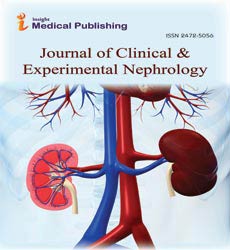Abstract
Chronic Kidney Disease: A Global Health Challenge with Cardiovascular Implications
Chronic Kidney Disease (CKD) affects nearly 10% of the global population, with stages 4 and 5 signifying severe kidney function impairment. This population faces a heightened risk of cardiovascular morbidity and mortality, with Cardiovascular Disease (CVD) emerging as the leading cause of death. Understanding and mitigating cardiovascular risks in CKD are paramount to improving outcomes. Uric acid, a byproduct of purine metabolism, is increasingly recognized as a contributor to CVD. Elevated serum uric acid levels, or hyperuricemia, exacerbate vascular health deterioration through several mechanisms: Uric acid reduces nitric oxide availability, impairing endothelial function and accelerating atherosclerosis. Hyperuricemia induces inflammatory pathways and oxidative stress, aggravating vascular damage. Uric acid activates the renin-angiotensin system, elevating blood pressure and perpetuating kidney damage.ÃÂ Given these effects, controlling uric acid levels in CKD patients is vital for slowing disease progression and reducing cardiovascular risks.Chronic Kidney Disease (CKD) affects nearly 10% of the global population, with stages 4 and 5 signifying severe kidney function impairment. This population faces a heightened risk of cardiovascular morbidity and mortality, with Cardiovascular Disease (CVD) emerging as the leading cause of death. Understanding and mitigating cardiovascular risks in CKD are paramount to improving outcomes. Uric acid, a byproduct of purine metabolism, is increasingly recognized as a contributor to CVD. Elevated serum uric acid levels, or hyperuricemia, exacerbate vascular health deterioration through several mechanisms: Uric acid reduces nitric oxide availability, impairing endothelial function and accelerating atherosclerosis. Hyperuricemia induces inflammatory pathways and oxidative stress, aggravating vascular damage. Uric acid activates the renin-angiotensin system, elevating blood pressure and perpetuating kidney damage.ÃÂ Given these effects, controlling uric acid levels in CKD patients is vital for slowing disease progression and reducing cardiovascular risks.
Author(s): Bolin Hao
Abstract | PDF
Share this

Google scholar citation report
Citations : 387
Journal of Clinical & Experimental Nephrology received 387 citations as per google scholar report
Abstracted/Indexed in
- Google Scholar
- Sherpa Romeo
- China National Knowledge Infrastructure (CNKI)
- Directory of Research Journal Indexing (DRJI)
- WorldCat
- Publons
- Secret Search Engine Labs
Open Access Journals
- Aquaculture & Veterinary Science
- Chemistry & Chemical Sciences
- Clinical Sciences
- Engineering
- General Science
- Genetics & Molecular Biology
- Health Care & Nursing
- Immunology & Microbiology
- Materials Science
- Mathematics & Physics
- Medical Sciences
- Neurology & Psychiatry
- Oncology & Cancer Science
- Pharmaceutical Sciences

